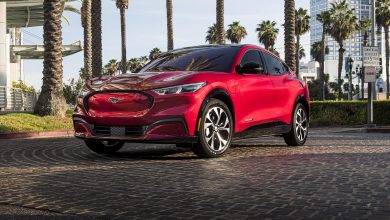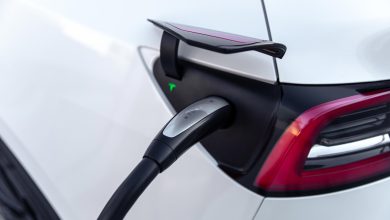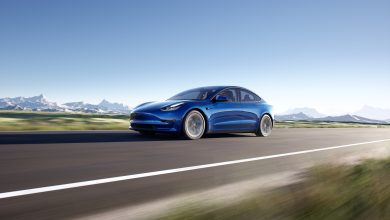Five Common Maintenance Mistakes Electric Vehicle Owners Make
EV NewsGood charging practices will prolong your battery life

Ever since the first Tesla went on sale, owning an EV has become most people’s dream. The recent announcement by the European Union government that gasoline-powered vehicles will be banned by 2035 will surely influence people’s next choice of cars.
Buying and driving an EV comes with a new list of experiences—and instructions. However, a lot of newbies in the EV world may be carried away about not having to worry anymore about the soaring gasoline price in the United States that they fail to read the manual.
Whole EVs take away most of the maintenance stress you may have been accustomed to with ICE-powered vehicles, it comes with its own challenges too. Unlike gasoline, where it takes about 10 minutes to fill up your tank, you may have to spend more time at a charging station when you drive an EV.
Also, there aren’t enough charging stations in the United States yet. Therefore, you may have to wait longer in the queue before you get your EV charged. If you can afford it and your apartment permits it, it may be a good idea to start thinking of installing a personal EV charger at home.
However, it is not all gloom. Owning an EV helps you to cut back on your carbon footprint and you will be playing your part in helping to curb global warming. To make that euphoric experience last longer for you, there are certain maintenance mistakes that you need to avoid.
Without further chitchat, here are maintenance flaws we encounter frequently among EV owners that you should avoid at all costs.
1. Settling for just any EV charger
According to a research by JD Power in 2021 titled J.D. Power U.S. Electric Vehicle Experience (EVX) Home Charging Study, the majority of EV charging happens at home—and it is understandably so. As much as 88% of EV owners said they charged their EVs at home more frequently.
While installing an EV charger at home is a brilliant idea, the mistake we encounter frequently is that some EV owners simply settle for any charger. You shouldn’t do that! Until EV chargers and batteries are standardized in the industry (just like USB-C in electronic devices), there is no one-size-fits-all at the moment.
Different EVs have different capabilities—just like the chargers too. There are regular chargers and fast chargers. Some of the things that you should consider when choosing a charger include cable length, power delivery, hardwired or plug-in, and smart charging feature.
One feature that you should take seriously when shopping for a home EV charger is the cable length. Consider where you will mount the charger and the distance you park your car. If the length of the cable cannot get to your car, then the charger will be useless for you.
2. Overcharging your battery
The range is one of the biggest anxieties that EV users have to constantly deal with—hopefully, that will change in the future. With fewer and often crowded charging stations, you want to make sure that you have enough power to take you to your destination, especially if you are on a long road trip. With this in mind, you want your battery to be at 100%.
Well, it may interest you to know that it is a bad idea. Charging your EV to 100% all the time (and frequently too) will cause the battery to degrade faster. It is believed that lithium-ion batteries (which are the main component of EVs) perform better at 30% to 80% charge. Thankfully, newer EVs can go from 10% or 20% to 80% in less than 20 minutes. There is an exception to this rule and it would be vehicles with a Lithium Iron Phosphate (LFP) battery. It is recommended that you charge LFP batteries to 100%.
You should only charge your EVs to the maximum when it is necessary, like when you are going on a long trip. Also, it is advised that if you must charge to 100%, do so just before you leave because keeping the battery at a max charge can lead to degradation.
Another reason why you should not try to charge your EV battery to the max, especially in a public charging station, is that you will be prolonging the queue. While it takes about 20 minutes to charge most EVs from 20% to 80%, it will take far longer to move it from 80% to 100%. This smart charge feature helps to prevent damage to the battery.
3. Not being aware of the conditions around you
It is OK to aspire to keep your EVs clean all the time but make sure that you use salt-free water for all your washing. This is because salt water is an electrolyte that allows the transfer of electric charge.
When an EV’s battery with max charge is flooded with saltwater, it can form a ‘salt bridge’ between the cathode and anode of the battery resulting in a sudden and uncontrolled transfer of energy that may lead to a short circuit. The outcome is that the EV will burst into flames.
This dangerous development was first reported in Florida. No fewer than nine EVs had caught fire after hurricane Ian made landfall. What this also means is that you should be mindful of where you park your EV. Make sure it is parked on an elevated platform if you live in an area that is prone to flooding.
4. Let your car sit just anywhere for too long
When using an EV, you need to be mindful of where you park your car—even if your area is not prone to flooding. Unlike ICE-powered vehicles, batteries don’t function effectively at extreme temperatures (cold and hot). When you allow your EV to sit in high temperatures for too long, the battery capacity will decrease.
Also, when left in an extremely cold environment for too long, some EVs will fail to turn on. Besides the battery capacity, extreme temperatures may negatively impact your paint job and lower the aesthetic appeal of your EV.
Assuming you want to travel for a long period during which you will not be driving your EV, it is best to park them in your garage and install insulating doors to keep the temperature in the garage fairly stable. In the absence of a dedicated garage, purchase a waterproof cover to protect the EV’s battery and appearance.
5. Not charging your battery for a long time
If you purchase any battery-powered device, one of the instructions that usually come with them is that you should charge the battery once every six months when not in use. For EVs, it is recommended that you charge the battery once every 3 months so that the battery doesn’t discharge fully.
Although overcharging your battery will hasten its degradation, proper charging is also a way of keeping it in good health. The bottom line here is that you should find the balance.
Conclusion
Driving conditions and your charging habits are the two factors that will determine how long your EV battery will last. For example, if you drive more often and charge your EV more often, it is expected that your battery will degrade faster than someone that drives every other day and doesn’t have to charge their battery so frequently.
At other times, the degradation of your battery may not be from your poor maintenance but from the prevailing climate condition of your environment. Nevertheless, do whatever it takes to keep your battery in good condition and you’ll benefit for many years to come.





